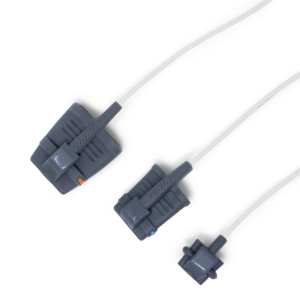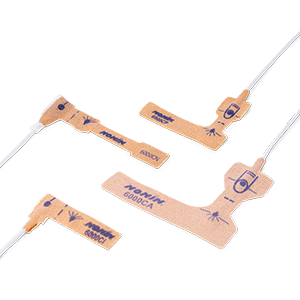After purchasing a pulse oximeter, the next step is selecting the right sensor(s). In order to do this, you need to know what you’re measuring with which device, who you’re measuring, and why sensor selection is important.
At Nonin, we specialize in developing, manufacturing and worldwide marketing of pulse oximetry monitors and sensors. Here are three key aspects we recommend you consider when deciding the sensor type that best fits your needs:
1. Understanding sensor impact
When it comes to getting accurate pulse oximetry readings, the sensor is just as important as the oximeter. Purchasing a high-quality sensor that has been tested in environments of low perfusion, ambient light, patient motion, and across diverse skin pigmentations will be a key factor in ensuring you get accurate readings when it matters most.
The combination of Nonin’s PureLight® sensor technology and PureSAT® pulse oximetry technology is the core of Nonin’s FDA cleared pulse oximetry systems, providing accurate oximetry measurements.1
2. Understanding the patient
It’s important to select the correct sensor for the type of patients you will be monitoring. For example, if you’re mostly monitoring neonatal patients, it makes sense to select a sensor designed for patients of that size. Additionally, if your patient population is diverse, it’s important to select a sensor that reads well across skin pigmentations.
At Nonin, we pride ourselves in offering high-quality sensors designed for a wide variety of clinical settings – creating an effective monitoring option for all types of patients. This includes offering sensors specifically designed for patients ranging from neonates to adults.
Nonin devices and sensors are cleared by the FDA. They have been tested for accurate pulse oximetry measurements in patients with diverse skin pigmentations.2
3. Understanding your measurement setting
It’s important to purchase a sensor that provides accurate measurements and is compatible with your oximetry device. Nonin’s oximetry devices are tested for accuracy and submitted to the FDA for clearance only when paired with Nonin’s exclusive “PureLight® Sensor technology. Because third-party sensors have not been clinically tested to meet FDA’s requirements for accuracy, inaccurate readings may occur when non-Nonin sensors are used, which may compromise patient safety.
Also, it is important to consider which style of sensor type makes the most sense in your setting, disposable, reusable, or hybrid sensors. Each is well-suited for different environments.
- Disposable sensors are convenient and designed for single-patient use. They are often made of a flexible material that can be convenient for patient populations such as infants or neonates.
- Reusable sensors are more durable and long-lasting. They help reduce your environmental impact while being an ideal choice for spot checks or long-term monitoring.
- Hybrid sensors are a unique combination of disposable and reusable. For example, the reusable sensor is secured with a matching disposable adhesive wrap. This is a great option if you’re looking for the convenience and performance of a disposable sensor with the economic and environmental savings of a reusable sensor.
Nonin offers multiple sizes and types of sensors, designed specifically for a variety of clinical settings:
| Disposable Sensors | Reusable Sensors | Hybrid Sensors |
|---|---|---|
 |  |  |
| The Nonin 7000 Flexi-Form III sensors are designed with an inclusive cable, sensor, and adhesive foam wrap. Great for extended SpO2 and pulse rate monitoring. | Nonin 8000S reusable soft sensors offer flexibility for short-term spot checking or continuous SpO2 measurement. | The Nonin 8000J Flex Sensor System combines the convenience and performance of a disposable sensor with the economy of a reusable sensor. |
| Nonin 6000C Disposable Cloth Pulse Oximetry Sensor | |
|---|---|
 | Designed with an inclusive cable, sensor, and adhesive cloth wrap, Nonin 6000C Series disposable cloth pulse oximetry sensors provide ultimate comfort for patients requiring extended SpO2 and pulse rate monitoring and secure placement. These sensors come in sizes for neonatal, infant, pediatric, and adult patients. |
